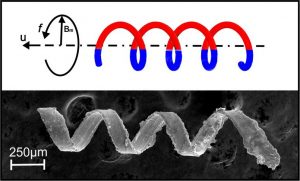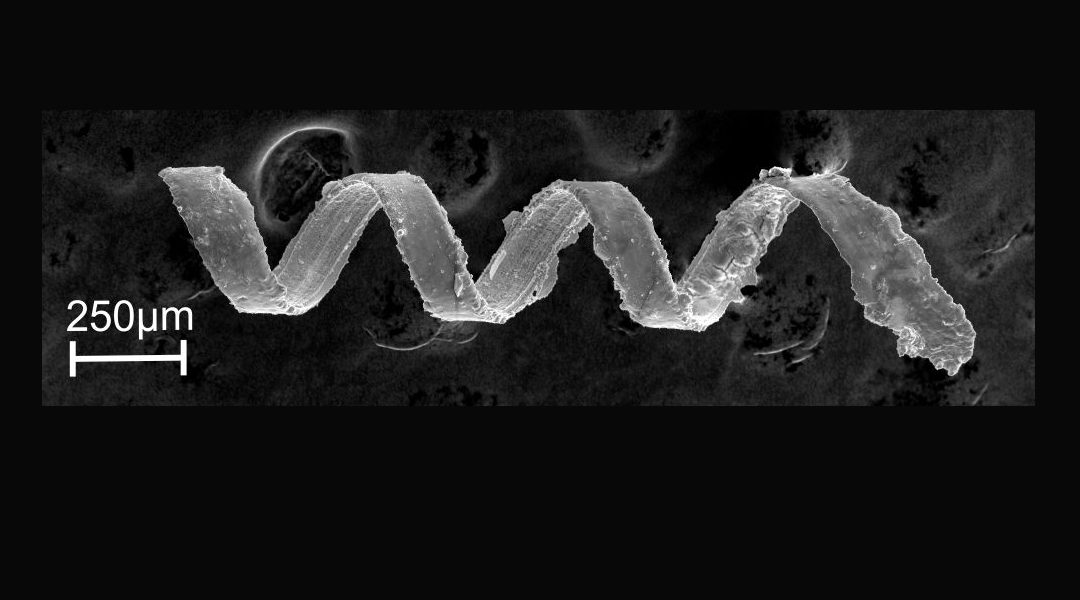Electrochemical processing techniques comprise a family of highly versatile methods that exploit redox reactions at surfaces, which ultimately lead to the deposition of a material. These techniques can be used to manufacture a wide variety of materials such as metals, alloys, metalloids, ceramics or polymers. Moreover, it allows for tuning the material properties by easily adjusting the operating conditions.
A particularly appealing technique among the electrochemical fabrication family is electroforming. Electroforming is a process in which a metal or an alloy is electrochemically deposited on a three-dimensional shape called mandrel or master. The deposited material replicates the surface of the mandrel with an accuracy that cannot be achieved with other manufacturing techniques.
In their article in Advanced Engineering Materials, Salvador Pané and co-workers from ETH Zürich report on the fabrication of microhelices with semi-hard-magnetic characteristics using template-assisted electroforming.
To electroform the helical microswimmers, a helical template on a polymer-coated metallic cylindrical mandrel is created using a laser, which precisely ablates the polymer coating and exposes the mandrel surface. Subsequently, the semi-hard-magnetic material is grown in the trenches produced by the laser. Thank to the magnetic memory of the material, the magnetization direction of the helical devices can be programmed to achieve corkscrew locomotion under rotating magnetic fields. The magnetic helices are able to propel in viscous environments such as silicon oil in three dimensions and against gravity.

















